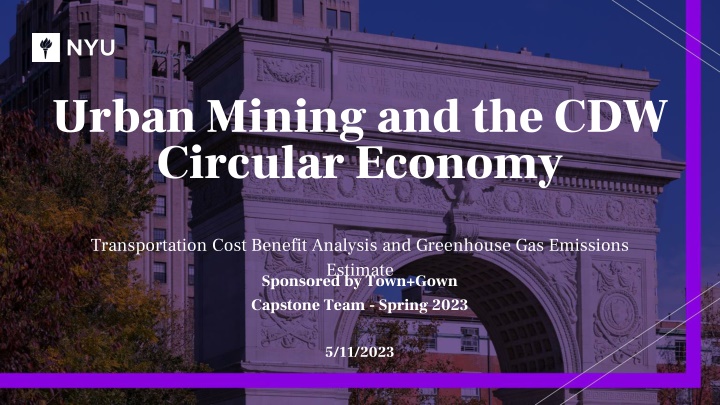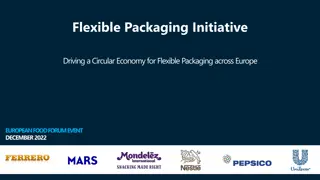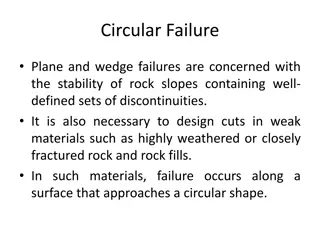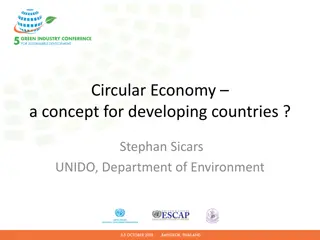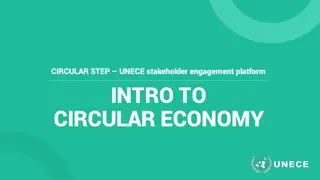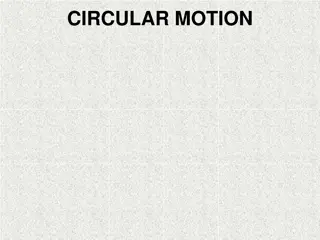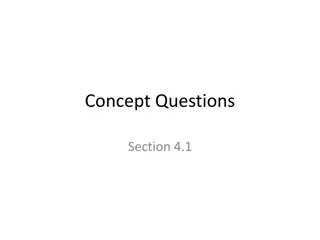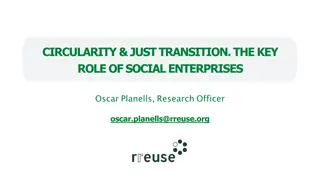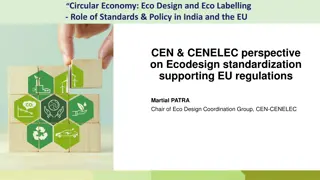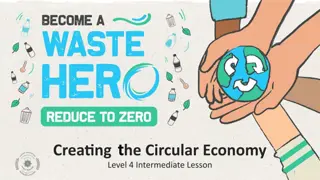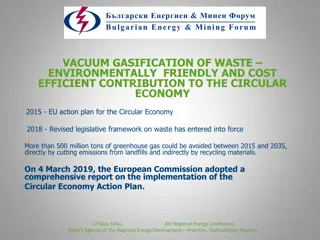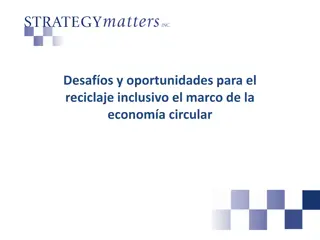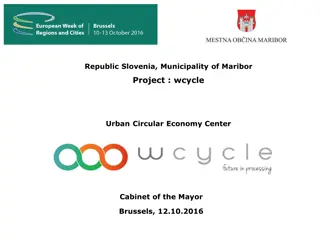Urban Mining and CDW Circular Economy Cost-Benefit Analysis
This case study focuses on comparing the cost and greenhouse gas emissions savings of local processing and reuse of Construction and Demolition Waste (CDW) materials versus sending them to landfills. By developing a prototype cost and GHG savings calculator, the aim is to showcase the potential of expanding the model for local recovery and reuse of CDW materials, promoting a sustainable and circular economy approach. The model calculates transportation costs, fuel costs, tipping/disposal fees, and GHG emissions to determine the advantages of CDW reuse over landfill disposal, highlighting the economic and environmental benefits of urban mining practices.
Download Presentation

Please find below an Image/Link to download the presentation.
The content on the website is provided AS IS for your information and personal use only. It may not be sold, licensed, or shared on other websites without obtaining consent from the author.If you encounter any issues during the download, it is possible that the publisher has removed the file from their server.
You are allowed to download the files provided on this website for personal or commercial use, subject to the condition that they are used lawfully. All files are the property of their respective owners.
The content on the website is provided AS IS for your information and personal use only. It may not be sold, licensed, or shared on other websites without obtaining consent from the author.
E N D
Presentation Transcript
Urban Mining and the CDW Circular Economy Transportation Cost Benefit Analysis and Greenhouse Gas Emissions Estimate Sponsored by Town+Gown Capstone Team - Spring 2023 5/11/2023
Our Team Achal Shah Zijie Yu Wanlu Tian Shiqi Liu Zhengze Li Quansen Zhao ads925@nyu.edu zy2358@nyu.edu wt2131@nyu.edu sl8474@nyu.edu zl4191nyu.edu qz2160@nyu.edu 2
Introduction Objective - This case study model is to compare an option for CDW (Construction and Demolition Waste) materials that can be reused in locally produced concrete and cement. The aim is to develop a prototype cost and GHG savings calculator, which can showcase the potential to expand the model and methodology for the local recovery and reuse of other CDW materials. Background: 1. Urban mining recovers valuable resources from waste, such as CDW. 2. CDW is a significant source of urban waste, accounting for 46% of New York State's total waste stream. 3. A circular economy prioritizes the reuse, recycling, and repurposing of materials to reduce waste and conserve resources. 4. New York State's beneficial use designation (BUD) regulations aim to divert CDW from landfills towards direct re-use or processing for new construction materials. 5. Other mechanisms to support a circular CDW economy include designing buildings and infrastructure for disassembly and recovery, creating markets for recycled materials, promoting deconstruction, and improving waste management systems' efficiency. 6. Adopting a circular economy approach to CDW can create new economic opportunities while reducing waste, conserving resources, and improving sustainability. 3
Example Case Study The objective is to compare direct costs and GHG emissions savings of local processing and reuse of CDW materials vs. sending them to landfills in Hazleton, Pennsylvania The model is based on a hypothetical excavation in Jamaica Queens, with excavated soil transported to a Long Island rock wash plant for producing clean sand. The model calculates transportation costs, fuel costs, tipping/disposal fees, and GHG emissions of the two options to determine savings of the local CDW reuse option. GHG emissions calculation is based on the EPA's estimate of 0.43 kg of CO2 emissions per liter of diesel fuel, allowing calculation of the average GHG emissions per ton of material. The model helps to compare costs and environmental impact of CDW re-use versus landfill disposal, promoting a sustainable and circular economy. 4
Transportation Cost of Standard Process Fuel Cost+ Tipping/Disposal Cost + Toal Truck Rent Amount of CDW material Unit Total Cost of Process ($/ton) = Total Fuel Cost(Cf): Cf= D/M Pf N D/M*Pf: T=(Cf+C Q+R)/Q T: unit transportation cost Cf: total fuel cost ($) Pf: unit price of fuel ($/gallon) F: amount of fuel (gallon) C: unit Tipping and disposal cost ($/ton) R: total cost of truck rent r : truck rent per hour($/hour) t : time required for a full process per truck (hour) Q: amount of construction and demolition waste (CDW) material (Ton) Q1: maximum load capacity per truck(Ton) N number of truck D: total distance in the process (Miles) M: unit truck mileage(miles/gallon) D/M represent how many gallon of fuel are needed by one truck. Pf is unit price of fuel, which is $3.4/gallon to get the fuel cost per truck. N=Q/Q1: Divide the amount of CDW material by the truck s maximum load capacity to get how many trucks are needed(N). N is rounded up to take into account that some trucks were not filled. Tipping/Disposal Cost(C Q)= Unit tipping/disposal cost(C) Amount of CDW material(Q) Truck Rent(R): R=N*t*r N =Q/Q1, number of trucks are needed t =D Speed of trucks with 22 tons loaded r represent truck rent per hour, which is $100/hour. 5
Transportation Cost of Recycled Process For Recycled process, there are two main parts: First part: from Jamaica Hospital to Wash Tech Second part: from Wash Tech to batch plant 60% of sand got from soil is needed Jamaica Hospital Wash Tech Batch plant Total cost of process = First distance (Fuel+Tipping fee+Truck rent)+Second distance (Fuel+Tipping fee+Truck rent) = D1/M Pf Q/Q1 + Q C + Q/Q1 D1/speed of trucks with 40 tons loaded r + D2/M Pf Q P/Q1 + Q P C + Q P/Q1 D1/speed of trucks with 40 tons loaded r D1: distance between Jamaica Hospital to Wash Tech(mile) Q1: maximum load capacity per truck (Ton) D2: distance between Wash Tech to batch plant(mile) ($/ton) M: unit mileage per gallon (mile/gallon) sand got from soil(60%) Pf: unit price of fuel ($/gallon) ($/hour) Q: amount of construction and demolition waste (CDW) material (Ton) C: unit tipping and disposal cost P: percent of r: truck rent per hour 6
Greenhouse Gas Emission of Standard Process Total GHG emission: The equation T=(Q/Q1)*(D/M)*E represents the total greenhouse gas (GHG) emissions generated during the transportation of construction and demolition waste (CDW) material. T=(Q/Q1) (D/M) E Q/Q1: (Q/Q1) represents the number of trucks needed to transport all the CDW material. This ratio tells us how many trips the truck(s) will need to make to transport all of the material. D: Total Distance in the Process (Miles) Q: Amount of CDW(Construction and Demolition waste Material ) (Tons) Q1: Amount of Material allowed in a Truck (Tons) D/M: (D/M) represents the amount of fuel consumed by the truck(s) during the transportation process, as it is proportional to the distance traveled and inversely proportional to the truck's mileage. M: Truck Mileage (Miles/Gallon) E: CO2 emission (Kg/Gallon) E: E represents for the CO2 emissions per mile produced by the truck. Total GHG emission/Ton: T/Q 7
Greenhouse Gas Emission of Recycled Process The equation T=[(Q/Q1) (D1/M)+(Q P/Q1) (D2/M)] E represents the total greenhouse gas (GHG) emissions generated during the transportation of Recycled construction and demolition waste (CDW) material. Total GHG Emission: T=(Gas consumption from JH to Wash Tech + Gas consumption from Wash Tech to Rock Plan) CO2 Emission =[(Q/Q1) (D1/M)+(Q P/Q1) (D2/M)] E Q/Q1:(Q/Q1) represents the number of trucks needed to transport all the CDW material. This ratio tells us how many trips the truck(s) will need to make to transport all of the material. D1/M:(D1/M) represents the amount of fuel consumed by the truck(s) during the transportation process, as it is proportional to the distance traveled and inversely proportional to the truck's mileage. Q: Amount of CDW(Tons) Q1: Amount of Material allowed in a Truck(Tons) D1: Distance from JH to Wash Tech(Miles) Q P/Q1:(Q P/Q1) represents the number of trucks needed to transport all the recycled CDW material. This ratio tells us how many trips the truck(s) will need to make to transport all of the material. M: Truck Mileage(Miles/Gallon) E: CO2 Emission(Kg/Gallon) D2/M:(D2/M) represents the amount of fuel consumed by the truck(s) during the transportation process of Recycled materials, as it is proportional to the distance traveled and inversely proportional to the truck's mileage. P: Percent of Sand got from soil(60%) D2: Distance between Wash Tech to Rock Plan(Miles) 8 E: E represents for the CO2 emissions per mile produced by the truck.
Website with Calculator The preceding slides showcased the transportation expenses and greenhouse gas emissions associated with the standard and recycled processes. Subsequently, models were utilized to devise a calculator, which construction firms can utilize to appraise their expenses and greenhouse gas emissions. For the standard process, inputting the overall distance and weight of materials will enable the model to calculate the total transportation expenses and greenhouse gas emissions. For the recycled process, the distances of both journeys, the total quantity of material retrieved from the excavation site, and the conversion rate between soil and sand are required to evaluate the expenses and emissions. Website Link: https://shiqiliu1999.github.io/jekyll/update/2023/05/09/Urban-Mining-and-the-CDW- Circular-Economy.html 9
Sensitivity Analysis - Transportation Cost According to our findings, in the standard process, increasing the truck allowance by 1 Ton would result in the most significant reduction in transportation cost, amounting to $2.3. Conversely, a $1 increase in fuel cost would raise the transportation cost by $3.3 per ton. However, in the recycled process, increasing the truck mileage by 1 Ton would lead to the most substantial decrease in transportation cost, reducing it by $0.37 per ton. On the other hand, a $1 increase in handling or tipping fee would raise the transportation cost by $1.6 per ton. 10
Sensitivity Analysis - GHG Emission Our analysis reveals that in the standard process, a 1-mile increase in truck mileage would result in the most substantial reduction of average GHG emissions, amounting to 1.07 Kg. In contrast, a 1-mile increase in the total distance traveled would lead to a modest increase of 0.02 Kg in GHG emissions for every 1 ton of material transported. Similarly, in the recycled process, a 1-mile increase in any journey would raise the GHG emissions by 0.01 Kg. However, increasing the truck mileage by 1 mile would lead to a noteworthy reduction of 0.18 Kg in GHG emissions. These findings suggest that increasing the truck mileage is an effective strategy to reduce GHG emissions in both the standard and recycled processes. 11
Recommendation Put effort on recycling process. The recycling process unquestionably offers cost savings in transportation and reduces GHG emissions, despite it charges tipping fees twice for two journeys. Consider renting trucks with a larger bearing weight, but with higher fuel efficiency. By doing so, companies can transport more material in fewer trips while consuming less fuel. This approach can significantly reduce transportation costs while also minimizing GHG emissions. Improve operational efficiency to reduce tipping fees in the recycling process. Companies should look for ways to minimize the number of journeys required to transport materials, such as consolidating loads or optimizing routing. By doing so, they can reduce the overall tipping fees and lower transportation costs. Choose trucks with higher utilization rates to reduce GHG emissions. Trucks that are optimized for fuel efficiency and have high utilization rates emit fewer GHG per ton of material transported. Companies can explore options like shared transportation or route optimization to improve utilization rates and reduce GHG emissions. 12
Acknowledgements Terri C. Matthews Jennifer Mcdonnell Todd Ruttura Director, Town+Gown Director, Solid Waste Management Planning President, Rock Tech NYC Department of Design and Construction NYC Department of Sanitation (DSNY) 13
Thanks 14
